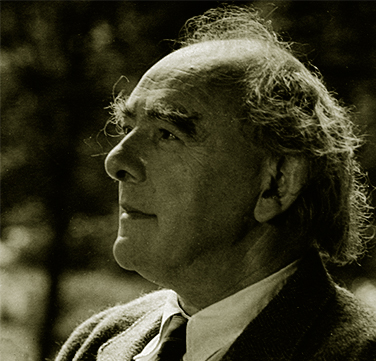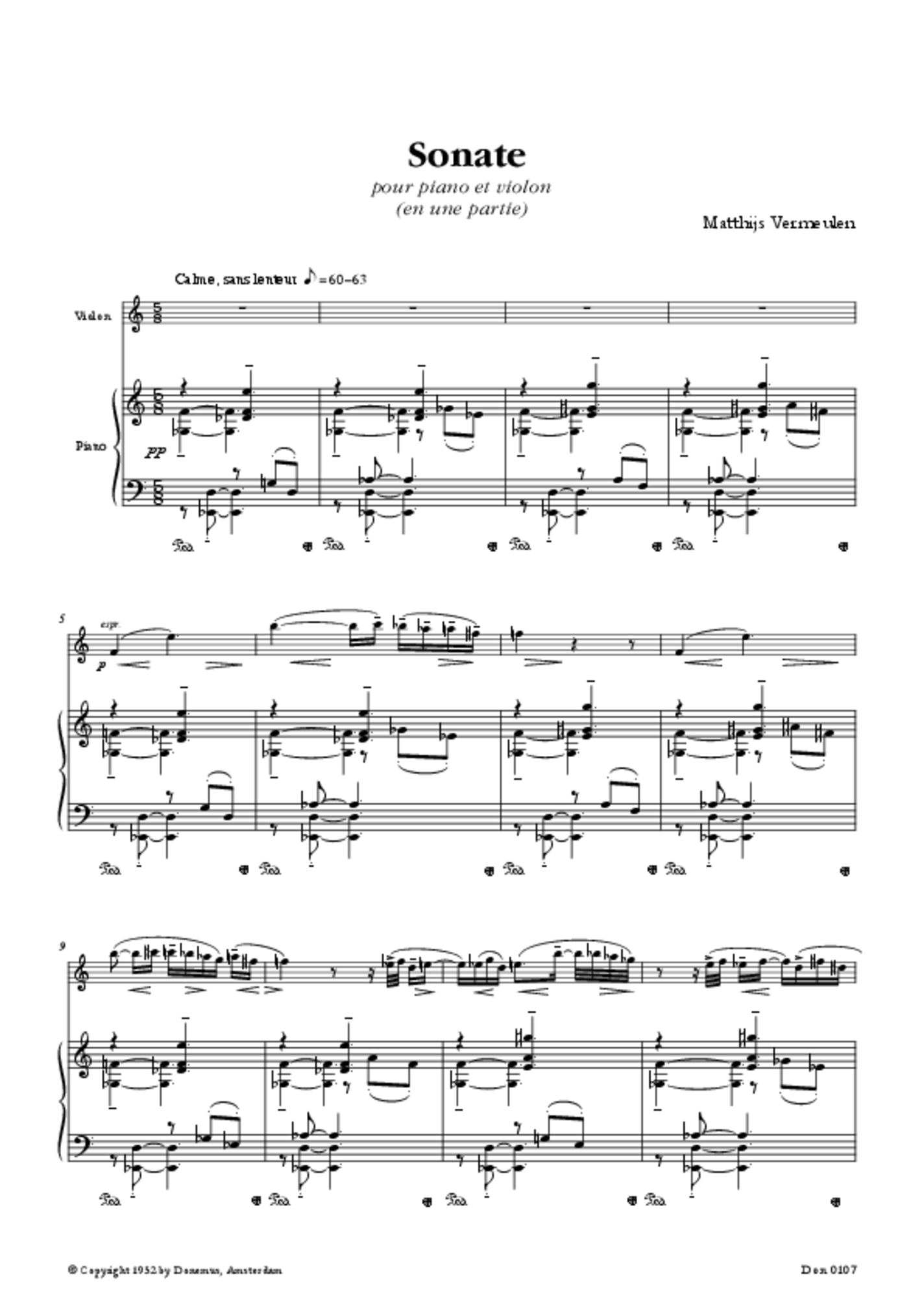MATTHIJS VERMEULEN
Componist, schrijver en denker

VIOLIN SONATA (1924-25)
In Vermeulen's oeuvre one can see a few shifts from quite simple to more complex works and back again, from compositions in which tension and relaxation alternate a lot, to pieces in which the tension is constantly high. The technical demands of the pieces fluctuate a lot as well. Of his chamber music, the Violin Sonata and the Second Cello Sonata have a high rate of complexity, intensity and difficulty and require the utmost of the performers. For both works the pianist needs to be able to stretch his hands widely.
Vermeulen started to compose his Sonate pour Piano et Violon on 1 November 1924 and completed it on 3 April 1925. Characteristic for this work are the chains of several, mostly short sentences that are related in pairs. This procedure of varied repetition cannot only be found in Vermeulen's music, but also in his writing.
The major seventh is an important element melodically as well as harmonically. The harmonies of the opening measures in the piano part are made up of this interval and the violin starts its initial phrases with it. The tritone (the augmented fourth or diminished fifth) also occurs frequently in the melody. In the second movement the minor ninth (the 'complement' of the major seventh) acts as a melodic and harmonic building block.
About the musical architecture of the second movement of the sonata an extraordinary phenomena is worth mentioning. Almost half of it is taken up by a large-scale passacaglia: in the bass line of the piano a pattern in long note values can be heard ten times in succession. The violin plays this theme as well, but in a high register. Gradually more and more counter melodies with fast notes can be heard and the violinist gets to play difficult two-note chords. Then lyricism takes over again in a long canon between the violin and the bass line of the piano, which follow each other one and a half bars apart. Towards the end of the work the tension dissolves in a Très lent in which the instruments converse with each other in spun out melodies that return to a tone centre several times. In the finale the harmonies from the beginning return.
Persistent attempts in France (by Nadia Boulanger and Henri Prunières), as well as in the Netherlands (by Daniël Ruyneman) to have the piece performed, and an attempt (by Willem Pijper) to have it printed by Oxford University Press, were fruitless. The composer was to wait until 1963 for the first performance. On 11 February Jeannelotte Herzberger and Maarten Bon premiered the Violin Sonata at a concert that took place in the auditory of the Stedelijk Museum in Amsterdam to celebrate Vermeulen's seventy-fifth birthday.
